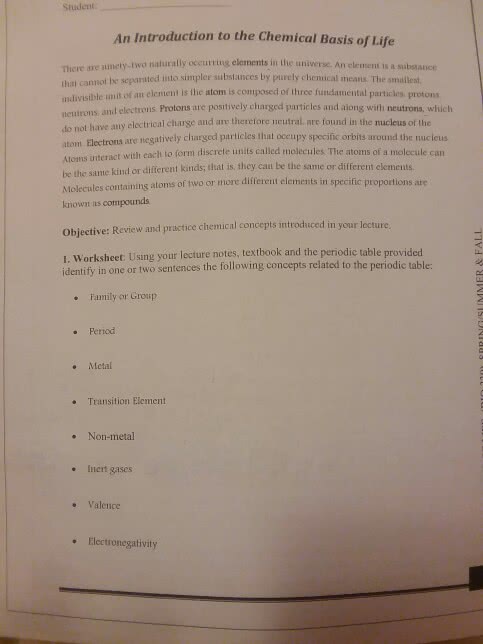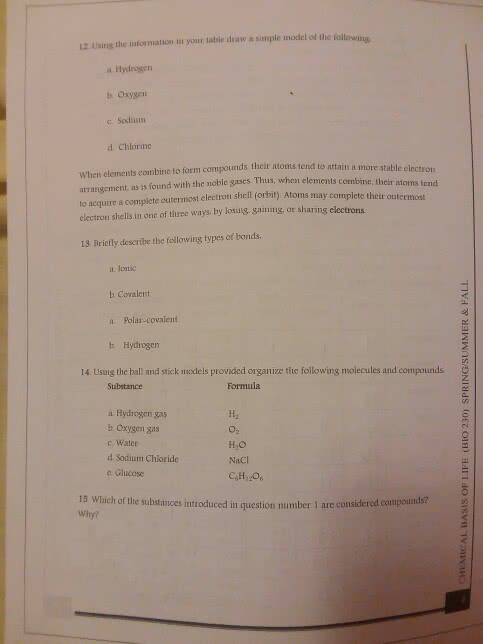CHE 101 Lecture Notes - Lecture 2: Sodium Nitrate, Dont, Perchlorate
Document Summary
Jim atwood: chemicals and periodic table, chemical elements a. i. a. ii. Everything is composed of these elements: elements combine to form compounds c. If one divides n element to the smallest unit, which retains identity is an atom. Molecules: atomic particles, each atom is composed of particles. *amu = atomic mass unit: protons and neutrons are the nucleus, atom diameter is ~ ( ngstr m); nucleus diameter is , mass is in nucleus d. i. (35 amu)(0. 755) + (37 amu)(0. 245) = 35. 5 amu. O = 16. 00: molecular mass is the sum of atomic masses which make up the molecule. Examples: h2o, 2 hydrogens, 1 oxygen, 2(1. 008) + 16. 00 = 18. 02 amu ***don"t forget sig figs, co2, 1 carbon, 2 oxygens, 12. 01 + 2(16. 00) = 44. 01 amu, nomenclature a. Ionic compounds a. i. a. ii. a. iii. a. iv. a. v. a. vi. a. vii. Simple metal cations are just the element name, perhaps with the oxidation state. Atoms which gain electrons and are negatively charged are called anions.




